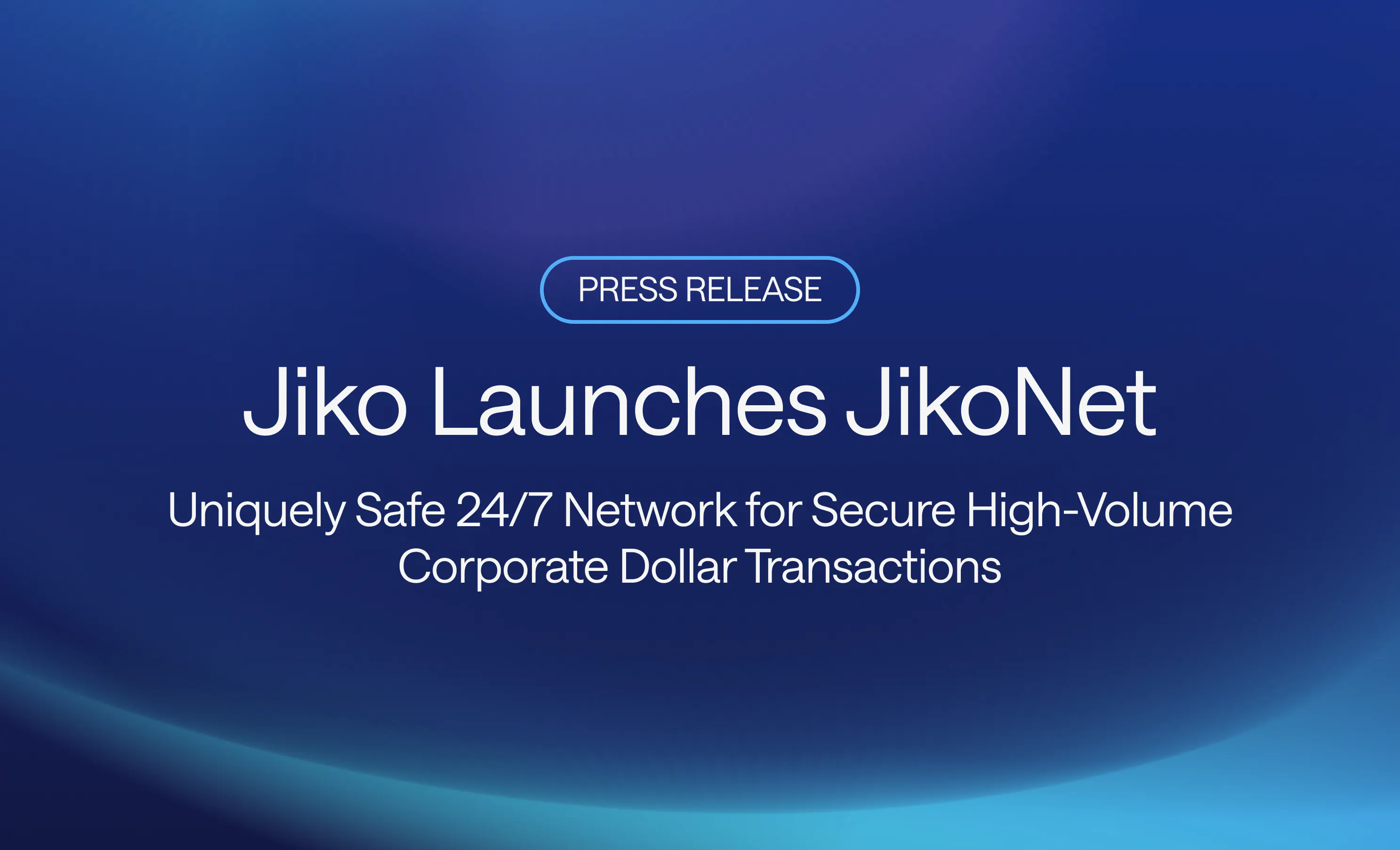The Real-Time Payments Race: Where the US Stands and What’s Next
Money needs to move in seconds—not days. But in the U.S., real-time payments haven’t reached widespread adoption for treasury teams, with a slower evolution shaped by regulatory considerations, legacy banking infrastructure, and competition among financial institutions. While the RTP landscape in the U.S. continues to evolve, the launch of multiple networks, adoption thus far, and clear value for users point to a significant demand for RTP development.

Why Treasurers Are Embracing Real-Time Over Wires and ACH
For treasury teams, real-time payments offer a critical advantage when it comes to liquidity management, risk reduction, and operational efficiency. By eliminating settlement delays associated with traditional payment methods like ACH and wires, RTP enables treasurers to optimize cash positioning in real time, reduce counterparty risk, and improve working capital efficiency. Instant settlement provides greater control over outgoing and incoming funds, ensuring that payments align with cash flow needs.
Adoption of Real-Time Payments
Real-time payment systems have taken hold across the world, often propelled by government-led initiatives that mandate broad adoption. Markets like India, Brazil, and the U.K. have seen widespread success due to centralized frameworks and standardized infrastructure. India’s Unified Payments Interface (UPI), for example, processed 172 billion transactions in 2024.
The adoption of real-time payments in the U.S. has been a gradual process, gaining momentum in recent years with the launch of key payment networks. Over the past year, adoption has accelerated beyond consumer transactions, with more than half of U.S. companies now using RTP in some capacity.
The Clearing House RTP Network
Launched in 2017 by The Clearing House, the RTP® network was the first real-time payments infrastructure available in the U.S., offering instant settlement and 24/7/365 availability. Operated by a private consortium of major banks, the RTP® network provides real-time clearing and settlement between participating financial institutions, with payments that are final and irrevocable.
The RTP® network is widely considered robust and enterprise-grade, making it a preferred choice for large banks and fintechs. Adoption has grown steadily. In 2024 alone, RTP processed 343 million transactions with a total payment value of $246 billion, representing a 94% increase in value from the prior year. Today, RTP is live at over 675 institutions, and its footprint continues to expand across both traditional banks and technology-forward financial platforms.
As of early 2024, the transaction limit was increased to $10 million to support business and institutional payments for larger players.
The Federal Reserve’s FedNow
FedNow® entered the real-time payments space in July 2023 as the Federal Reserve’s response to the growing demand for always-on payments. Designed to broaden access, particularly for regional banks and credit unions, FedNow offers many of the same capabilities as the RTP® network but is operated by the public sector and settles transactions in central bank money, making it attractive to institutions looking for a direct, government-run alternative.
In the fourth quarter of 2023, FedNow processed just $13 million in total payment value, but by the fourth quarter of 2024, that figure had surged to over $20 billion, signaling accelerating institutional adoption. FedNow currently supports payments up to $500,000, which suits consumer and small business use cases but may limit its utility for larger corporate treasury operations. Still, with over 1,200 institutions onboarded—nearly double the RTP® network’s current count—FedNow is building a broad network, even if many of those institutions are still in the early stages of live implementation.
What’s Slowing Down Broader RTP Adoption in the US
Despite the adoption so far, there are improvements to be made and hurdles to overcome to support high-volume real-time payments. Financial institutions, regulators, and businesses must navigate a range of challenges—from fraud prevention to the operational realities of legacy banking systems.
Bank Balance Sheet Risks
Facilitating RTP puts a burden on banks to hold liquid assets and exposes corporate funds to balance sheet risks, which creates challenges.
Unlike traditional payment rails (namely, ACH and wires) that allow banks to balance incoming and outgoing payments over time, RTP can create unexpected fluctuations. Financial institutions must ensure they have enough cash reserves to process payments at any moment. The shift towards instant payments makes banks more reliant on liquid asset buffers to meet payment shocks and could incentivize risk-taking behavior to compensate while meeting regulatory deposit requirements(1).
Fraud Prevention
One of the biggest challenges for institutions supporting RTP is fraud detection and prevention. Unlike ACH payments, which offer financial institutions time to flag suspicious transactions as they are processed, RTP transactions settle instantly, leaving little room for intervention once a payment is sent. Traditional anti-money laundering (AML) controls rely on batch-based monitoring, where transactions are reviewed in aggregate over time. As a result, treasurers may be hesitant to utilize RTP capabilities until they are confident in their fraud mitigation strategies.
Legacy Banking Infrastructure
Most U.S. banks still operate on legacy core systems, which were designed for batch-based payment processing rather than real-time transactions. The majority of financial institutions experience challenges in their backend legacy systems to facilitate instant payments and would require an upgrade to their core systems before introducing real-time payment functionality.
Many financial institutions rely on established reconciliation and reporting cycles that don’t yet accommodate real-time payment flows, like batch processing once a day. Operational workflows are tailored to traditional methods like ACH and wires and may require adjustments to accommodate real-time processing.
Unoptimized Deposits
Treasurers seek returns on corporate cash, and banks typically offer little to no interest on funds, leaving large sums of corporate cash unoptimized for yield. While compared to ACH settlement delays, RTP allows treasury teams to allocate funds into yield-generating destinations quicker, manual work is required to do so, and funds remain uninvested for both the sender and receiver when a transaction takes place.
Regulatory Oversight
Real-time payment networks operate under strict regulatory oversight, particularly in the U.S., where banking regulators impose stringent rules on how payment systems function. Trusted RTP solutions (unlike private-sector-led RTP initiatives) in the U.S. must take place in the highly regulated U.S. financial system to be adopted by treasury teams.
Stablecoin Use Case for Crypto-Based Real-Time Settlement
Stablecoins have emerged as a compelling alternative for real-time payments, enabling near-instant, blockchain-based settlements without relying on traditional banking rails. Stablecoins are typically backed 1:1 by fiat reserves and issued by private entities, offering 24/7 accessibility through digital wallets. When funds are transferred via stablecoins, value is moved directly between digital wallets on a blockchain network, often completed in seconds and without the need for intermediaries like correspondent banks or clearinghouses. This transfer is final and irreversible, and the updated state is recorded across the distributed ledger, providing a clear, tamper-proof settlement record. Because transfers occur on a decentralized infrastructure, they are available 24/7, can be integrated programmatically via smart contracts, and settle independently of traditional banking hours or systems.
Despite the technical advantages, stablecoin adoption for treasury operations remains limited due to a range of regulatory, operational, and risk management concerns. A primary challenge is the lack of consistent regulatory classification and oversight. For example, some regulators have argued that certain stablecoins may fall under securities laws if they promise returns or involve the pooling of funds, while others view them as money transmission instruments subject to state licensing requirements. Additionally, issuers may not be subject to the same prudential regulation or capital requirements as banks or money market funds, raising questions about solvency risk and whether treasurers could reliably redeem stablecoins for fiat in times of stress.
From an operational perspective, there are also gaps in how stablecoin transactions fit into existing compliance, tax, and audit workflows. Corporate treasurers must assess how stablecoin holdings are recorded on balance sheets, how they are treated from a tax perspective, and whether their custodial arrangements meet internal control standards. In many cases, using stablecoins means stepping outside traditional banking protections, such as FDIC insurance or central bank settlement, which further elevates the perceived risk. Until there is clear regulatory guidance and uniform standards for stablecoin issuers, custody, and compliance, most institutions remain cautious, opting for more transparent and better-understood vehicles like government money market funds or direct Treasury investments.
Future Trends and Predictions for Real-Time Payments
As RTP continues to evolve and continues to be utilized by treasury teams, the next phase of innovation will focus on scalability, security, and deeper integration into corporate finance workflows.
Beyond domestic transactions, cross-border RTP is emerging as a critical focus area. Efforts to improve network interoperability, ISO 20022 standardization, and regulatory alignment are helping address inefficiencies in international settlements. As businesses seek faster, lower-cost global transactions, financial institutions are working to bridge payment systems across borders, replacing slow, costly correspondent banking models with more efficient alternatives.
For RTP to become a truly trusted and scalable tool for treasurers handling high-volume, sensitive transactions, the limitations covered in this article must be addressed. Most notably, bank balance sheet risk and fraud prevention. Without mechanisms to manage these liquidity demands efficiently and proper fraud monitoring, large-scale RTP adoption for treasury teams will continue to lag, particularly when it comes to sensitive, high-volume transactions. Solutions in the RTP space must be supported at scale without significantly increasing risk exposure for either the sender, recipient, or financial institutions involved.
Further reading

Tariffs, Treasuries, and Turbulence: Why T-Bills Still Stand Strong
A look at early April’s market volatility, shifting Treasury yields, and why T-bills remained a stable, reliable home for cash amid uncertainty.. Read more →

Jiko Launches JikoNet, a Uniquely Safe 24/7 Network for Secure High-Volume Corporate Dollar Transactions
The new network significantly minimizes counterparty risks by providing direct Treasury bill ownership, delivering an unprecedented scale and stability to the institutional markets, starting with the digital asset world. . Read more →

4 Mistakes Treasurers Need to Avoid When Investing in a Money Market Fund
What Are Money Market Funds? Money Market Funds (MMFs) are a type of mutual fund that invests in short-term, relatively liquid financial instruments. Read more →